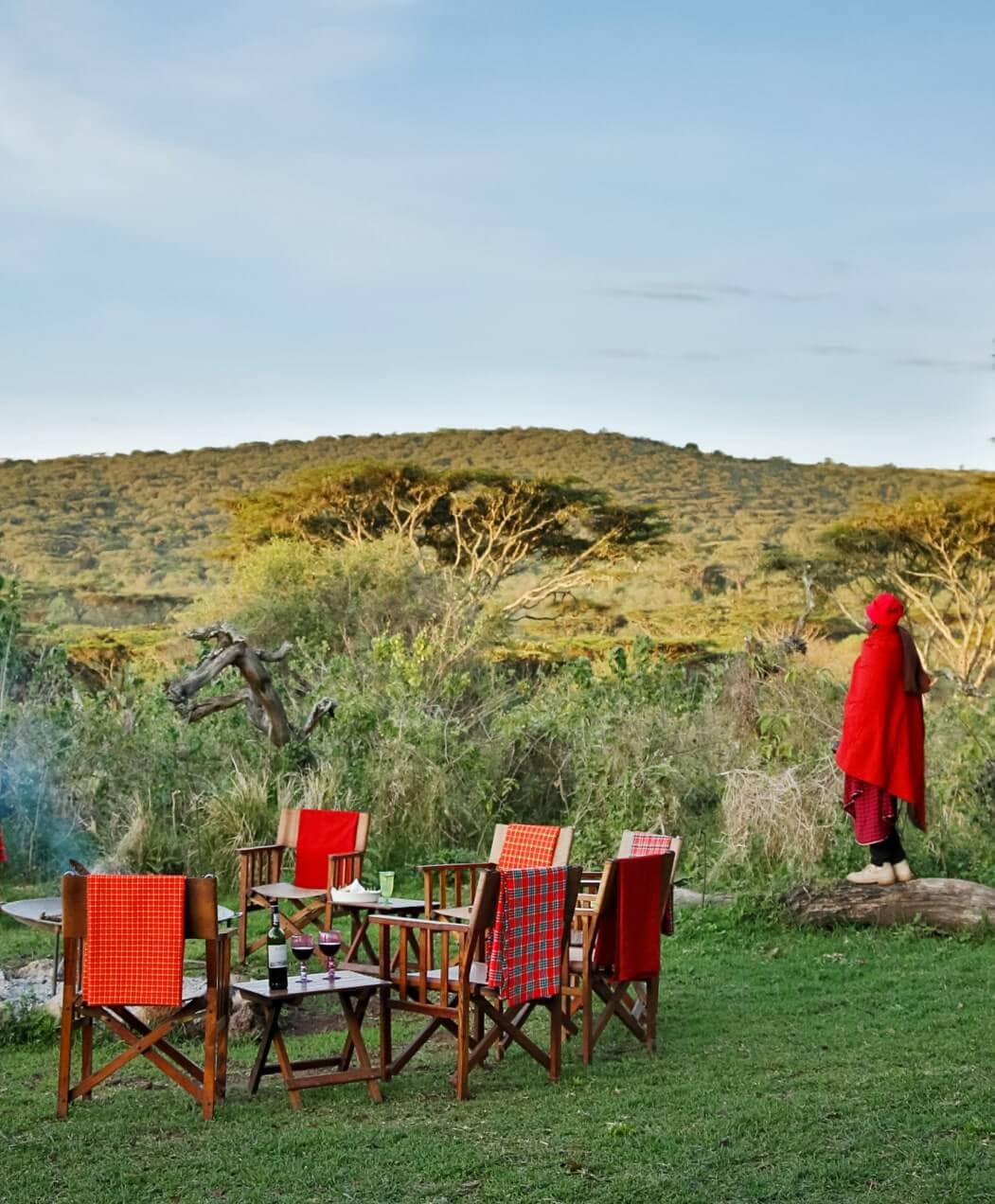
Lemala Camps
P.O.Box 14529, Arusha. Tanzania.
Lemala Camps
P.O.Box 14529, Arusha. Tanzania.

The Serengeti National Park is possibly the best-known wildlife sanctuary in the world, unequaled for its natural beauty and ecological value. It lies between the shores of Lake Victoria in the west, Lake Eyasi in the south, and the Great Rift Valley to the east. The name Serengeti is derived from the Maasai word siringet meaning ‘endless plains’; a fitting title for a place that features far-reaching grassy plains tinged with the twisted shadows of acacia trees and dotted with kopjes of giant granite boulders. With more than two million wildebeest, half a million Thomson’s gazelle, and a quarter of a million zebra, it supports the greatest concentration of plains game in Africa, and for this it was granted the status of a UNESCO World Heritage Site in 1978.
The park covers an area of 14,763-sq-km, but it is the center of the much larger Serengeti Ecosystem – a region that encompasses approximately 30,000-sq-km and is a combination of the Serengeti, the Ngorongoro Conservation Area, Kenya’s Maasai Mara and several smaller game reserves. The system protects the annual wildebeest migration; so called because the majority of hooved animals on this astonishing journey are wildebeest, but they are joined in equally staggering numbers by zebra and gazelle. These animals embark on a roughly 1000-km-long circular trek through unfenced Tanzania and Kenya in search of seasonal pasture and water and are hotly pursued by their predators. It is a phenomenal sight, but the Serengeti also offers rewarding year-round, high-density game viewing, which includes significant large predator-prey interactions, especially in the central and eastern areas of the park.
The month starts with the migration continuing at speed, but starts to slow down when calving season kicks in. Southern Serengeti becomes filled with young animals and excellent predator action.
By February, the herds slow right down while mothers give birth in southern Serengeti. This provides high excitement as lion and cheetah descend on the fragile newborns.
Springtime ushers in the park’s rainy season. Because most visitors are deterred by the wet conditions, you can expect to find lower prices on excursions and lodging. The migration is on the move again as the young calves gain strength.
The rainy season. Keep in mind that most of the semi-permanent campgrounds, and some of the lodges, close their doors to tourists during this time, so you’ll need to plan ahead. The migration moves to the western region of central Serengeti, travelling slowly because their calves are still young.
The final month of the wet season. It tends to rain most days, although seldom for the whole day. It’s often cloudy and birdwatching is at its best.
June and July are the best months to see the wildebeest migration – you’ll most likely find the herd near the Grumeti River. It’s mostly sunny, with very little rain. Mornings and nights get cold – warm clothing is recommended.
Considered one of the best months to see the migration, as it moves into north-western Serengeti. River crossings on the Grumeti get busier, with grazers taking on the river’s vicious crocodile population.
By August, you can see the Great Migration in northern Serengeti. This is when you may get to see the herds plunging into the crocodile-infested Mara River as they cross into Kenya. The wildebeest and zebras mingle with elephants and giraffes in beautiful Lobo and Bologonja Springs in the park’s northern area.
In early September you might catch the last of the herds crossing the Mara River, as they move from Tanzania into Kenya. As a general rule, it’s better to visit the Masai Mara at this time.
Considered to be one of the quieter times to visit as the majority of the migration is across the border in Kenya. Short, sporadic rain showers signal migration’s return to the southern grasslands.
By November the herds are returning to northern Serengeti from the Masai Mara in Kenya. They usually linger in north-eastern Serengeti and migrate further south in December.
Short, sporadic rain showers signal the migration’s return to the southern grasslands. Plan to spend most of this month in the Western Corridor along the Grumeti River or at the Mbalageti Tented Lodge, a permanent campground with sweeping views.
The Serengeti is famous for its annual wildebeest migration that crosses its vast, open grasslands. One of the greatest spectacles in the natural world, the migration sees more than 1,500,000 wildebeest, 200,000 zebra and 300,000 Thomson’s gazelle join the trek for fresh grazing. The migration follows a circular route, crossing between Tanzania and Kenya, and attracts an array of big predators.
Yes, the plains of the Serengeti are probably the best-known African savanna. There are two main types of vegetation in the Serengeti. Grasses cover the vast open plains of the southeast while in the central region, acacia plants are more common.
The migration follows a circular route, over the course of a year, between Kenya and Tanzania effectively following the fresh rains in search of fresh grass. Technically, the migration is always taking place, but there are certain periods when the wildlife viewing is best. The calving season in January and February leads to a lot of thrilling predator activity and is one of the better times to visit. The iconic scenes of moving columns, often containing hundreds of thousands of animals, and the dramatic river crossings are best seen between June and September.

